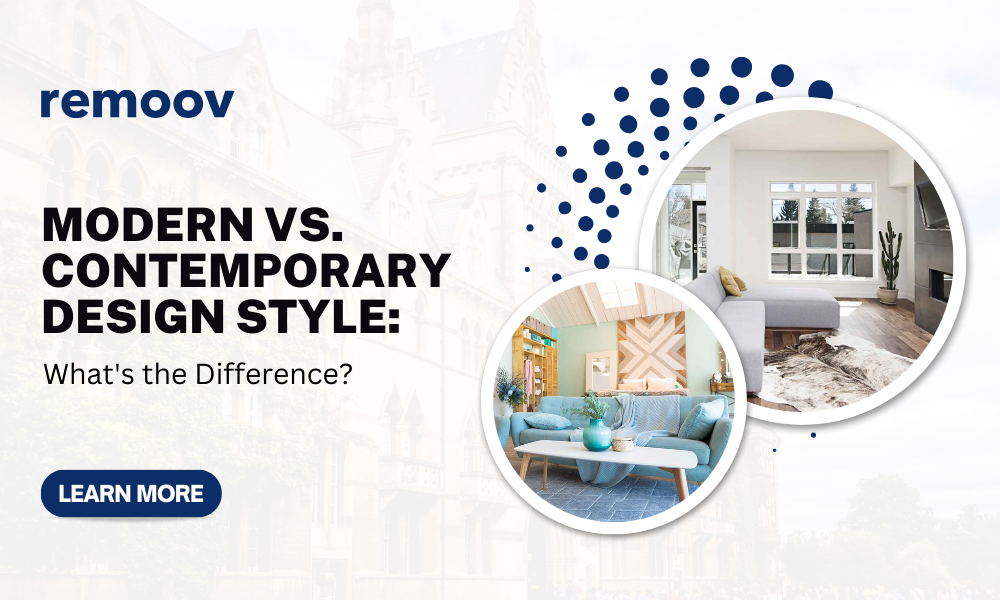When it comes to interior design, “modern” and “contemporary” are often used interchangeably. However, these two terms actually represent distinct styles with unique characteristics, histories, and key elements. Understanding the differences can help you choose the style that best suits your aesthetic preferences and lifestyle.
Understanding Modern Design Style
Modern design is rooted in the early to mid-20th century and is heavily influenced by the German Bauhaus and Scandinavian designs. Modernism emerged as a reaction against the ornate Victorian and Art Deco styles that preceded it, emphasizing function and simplicity.
Key Characteristics of Modern Design
- Natural Materials: Wood, leather, and natural fibers are commonly used, with an emphasis on earthy, neutral color palettes.
- Strong, Clean Lines: Modern design favors straight, geometric lines, which are seen in furniture silhouettes and architectural elements.
- Functional Pieces: Every element in a modern room serves a practical purpose. Decorative pieces are minimal and often have a function beyond aesthetics.
- Muted Colors: Color palettes in modern design lean toward muted tones, such as beige, brown, and green, often paired with white or other neutrals for a calm, cohesive look.
- Minimal Ornamentation: Modern design is about simplicity. You won’t find heavy details or ornate embellishments in this style; it’s all about the beauty of the materials and the shape of the pieces themselves.
Understanding Contemporary Design Style
Contemporary design, on the other hand, is a more fluid and ever-changing style that reflects the latest trends. While it shares a minimalist philosophy with modern design, contemporary style is less rigid and incorporates a variety of influences, evolving with the times.
Key Characteristics of Contemporary Design
- Adaptability: Contemporary design doesn’t adhere to a specific historical period. It draws from modernism, minimalism, and even futurism, and it evolves based on current trends.
- Contrast and Boldness: Unlike the subdued tones in modern design, contemporary spaces often feature high contrast, like black and white, or use bold accent colors to make a statement.
- Curved Lines and Shapes: Contemporary design embraces organic, flowing forms. Unlike modern design’s emphasis on straight lines, contemporary furniture might include curves and unconventional shapes.
- Mixed Materials: This style frequently blends natural materials like wood and stone with industrial materials like metal and glass, creating a balanced look.
- Focus on Space: Contemporary design is known for its open layouts and airy feel. It uses lighting and negative space effectively, creating a bright and spacious ambiance.
Similarities Between Modern and Contemporary Design
Modern and contemporary designs often overlap, sharing some key elements that contribute to their minimalist look:
- Uncluttered Spaces: Both styles favor open layouts with minimal clutter, emphasizing the importance of space.
- Clean Lines: While modern design favors straight lines, contemporary design also incorporates clean lines, though it may feature more curved elements.
- Minimal Decoration: Both styles avoid excessive ornamentation and focus on the essentials, resulting in a sleek, uncluttered aesthetic.
- Natural Materials: While modern design is rooted in natural materials, contemporary design often blends them with industrial elements for a mixed-media look.
Key Differences Between Modern and Contemporary Design
Though modern and contemporary styles share common ground, they have distinct differences that make them unique:
- Historical Influence vs. Present Trends: Modern design is a fixed style rooted in a specific era, while contemporary design is ever-changing and reflects current trends. Modern design stays true to its origins, while contemporary design evolves constantly.
- Color Palette: Modern design tends to use warm, natural hues, while contemporary design often uses cooler, contrasting colors, such as black and white, or incorporates bold pops of color.
- Form and Shape: Modern furniture is characterized by straight, strong lines and structured forms, while contemporary design often features more curved, flowing shapes.
- Decorative Elements: Modern design is about function and tends to be minimal with decorations. Contemporary design, however, often uses art pieces and unique accessories as focal points, allowing for more personalization and creativity.
When to Choose Modern Design
If you appreciate a clean, cohesive look with a nod to the past, modern design might be the perfect fit for you. This style is ideal for those who enjoy warm tones, simplicity, and a focus on function. If you’re drawn to mid-century elements or the organic beauty of wood and natural materials, modern design offers a timeless appeal that won’t go out of style.
When to Choose Contemporary Design
For those who like to stay current and embrace change, contemporary design offers the flexibility to adapt and evolve. This style is great for people who enjoy experimenting with colors, textures, and unique pieces that reflect the latest trends. If you love an airy, open space with a touch of bold contrast and enjoy mixing elements from various periods, contemporary design may be the way to go.
Combining Modern and Contemporary Elements
If you’re drawn to aspects of both styles, blending modern and contemporary design elements is possible, as they share a minimalist foundation. You might opt for modern, streamlined furniture with contemporary accessories or lighting fixtures that add an unexpected twist. This fusion allows you to create a personalized space that reflects both timelessness and innovation.
Final Thoughts on Modern vs. Contemporary Design
Choosing between modern and contemporary design ultimately depends on your personal taste and how you want your space to feel. Modern design provides a sense of calm through its simplicity and historical roots, while contemporary design offers an up-to-the-minute look with flexibility for future changes.
Understanding these two styles not only helps in defining your own aesthetic but also empowers you to create a space that resonates with your personality and lifestyle. Whether you lean towards the functional and timeless or the evolving and eclectic, both modern and contemporary designs offer exciting ways to transform your home into a space that’s uniquely yours.

